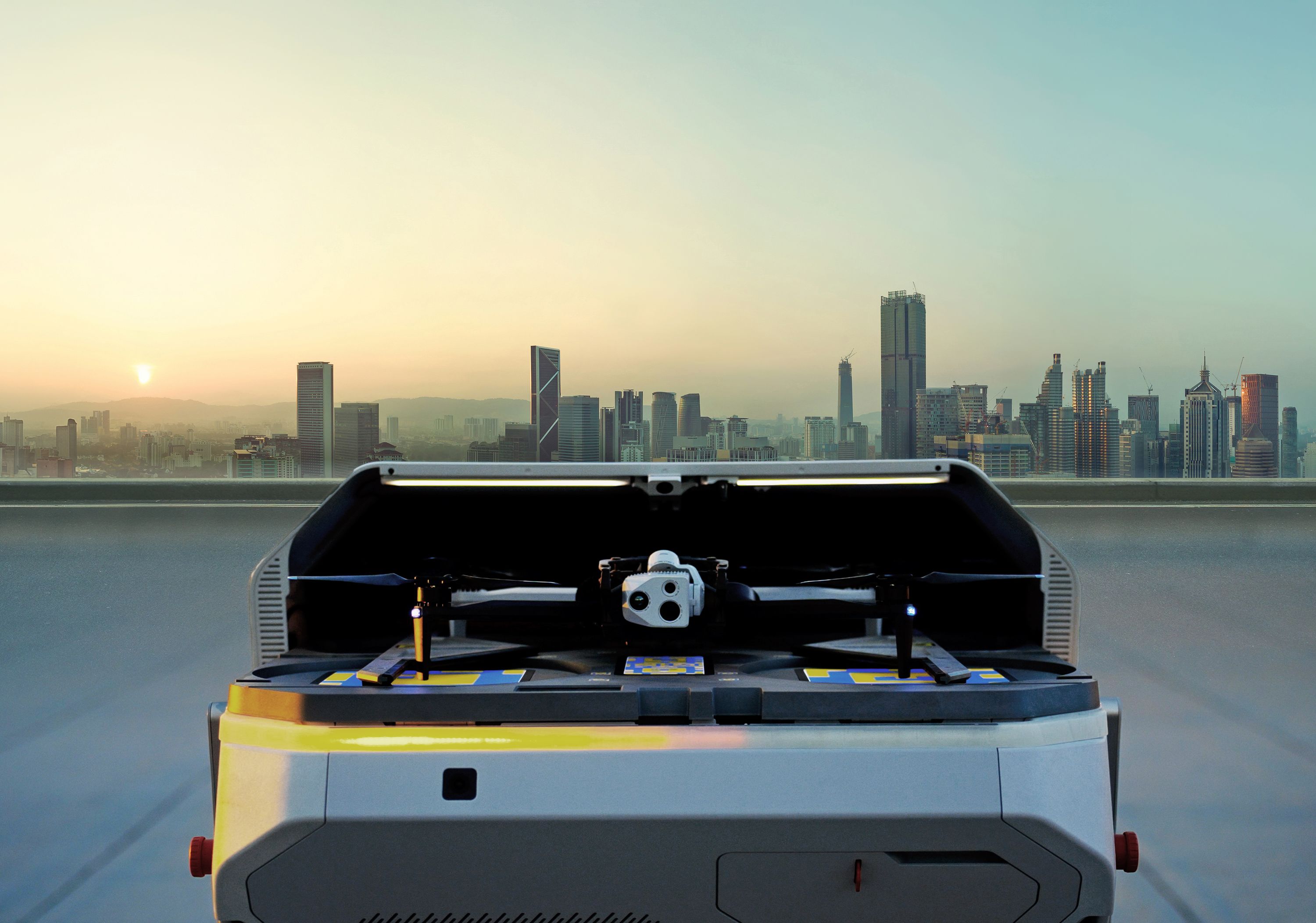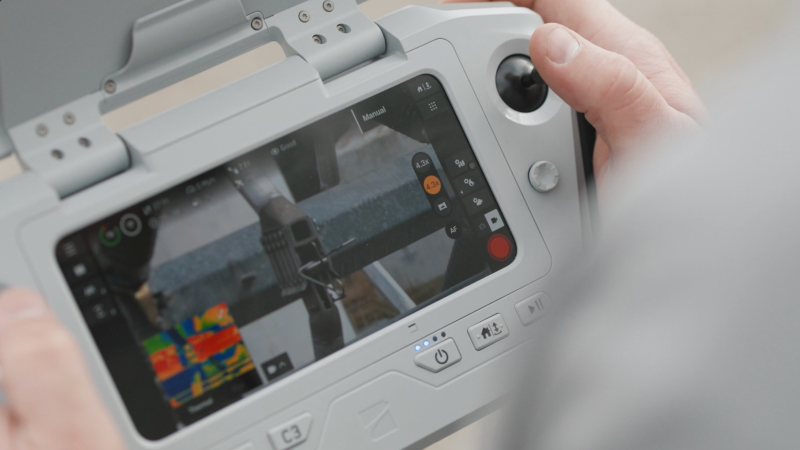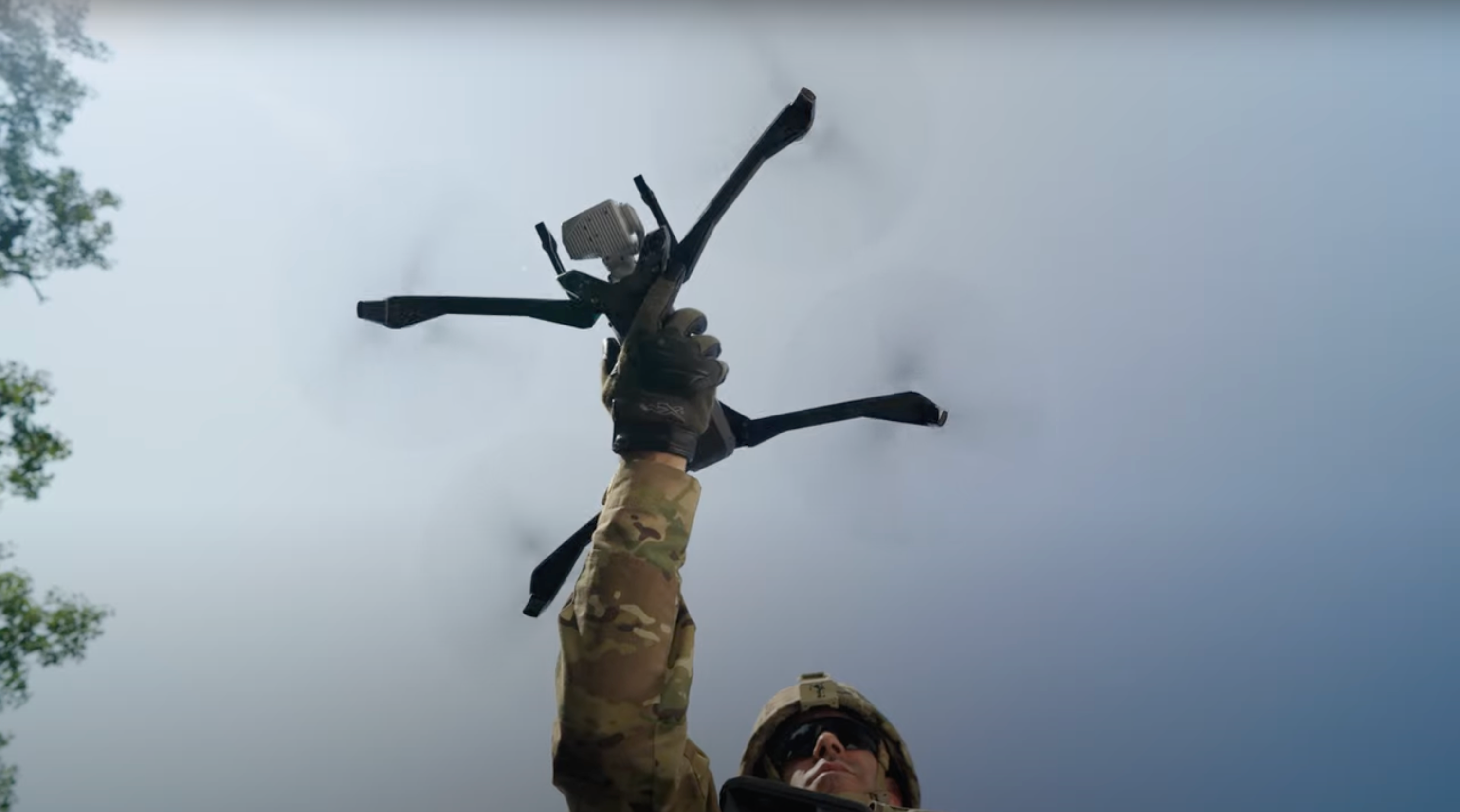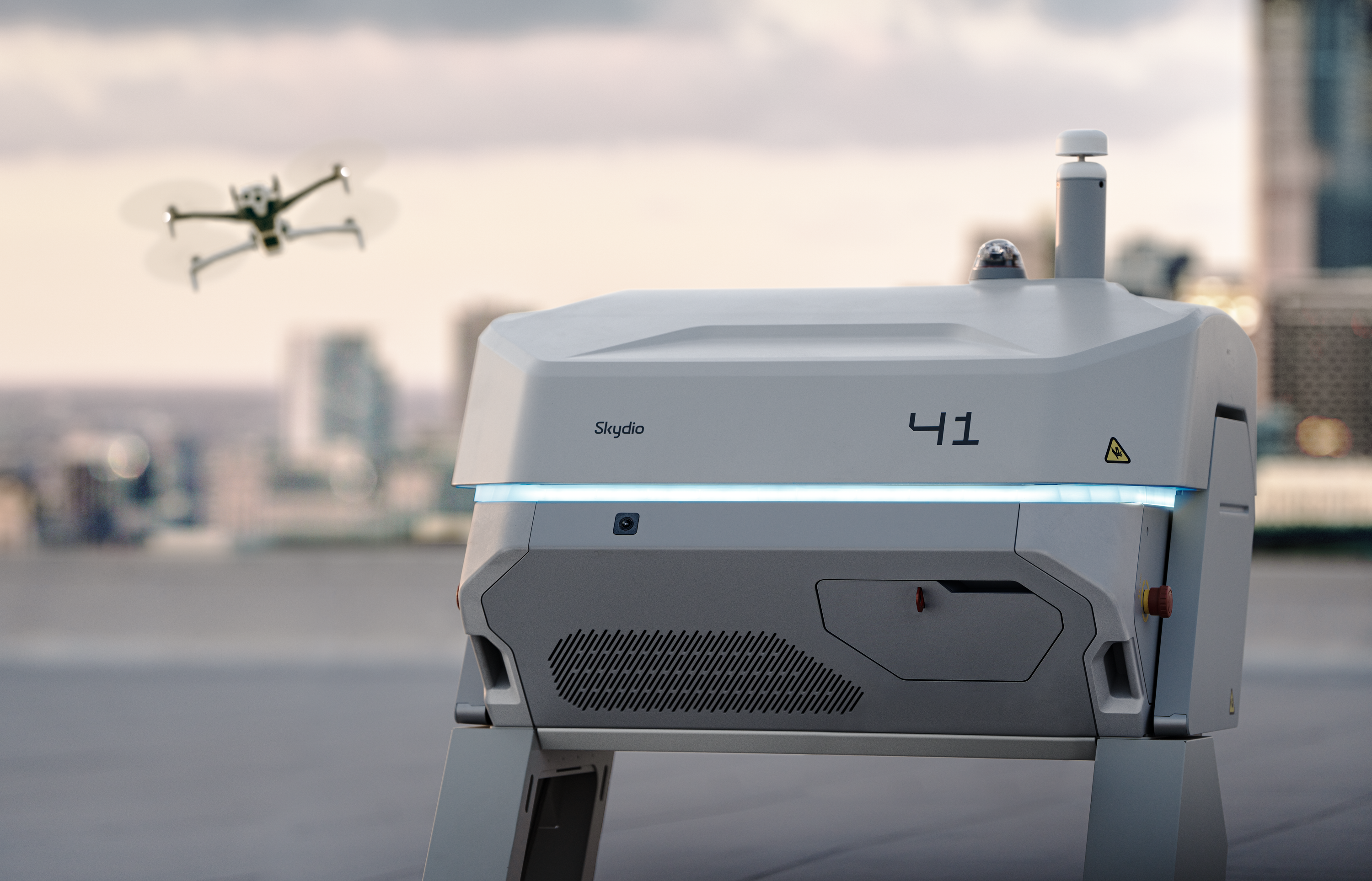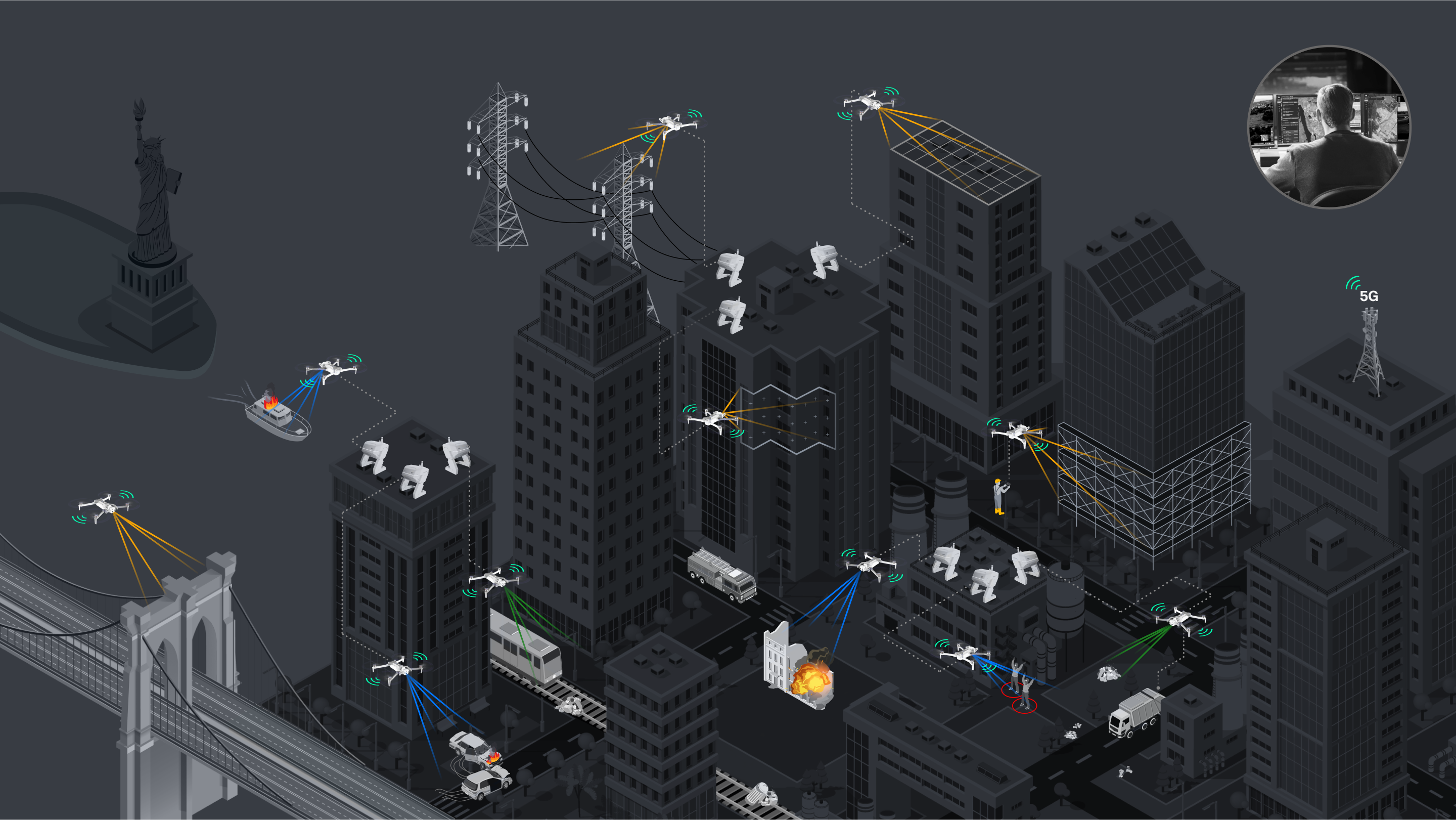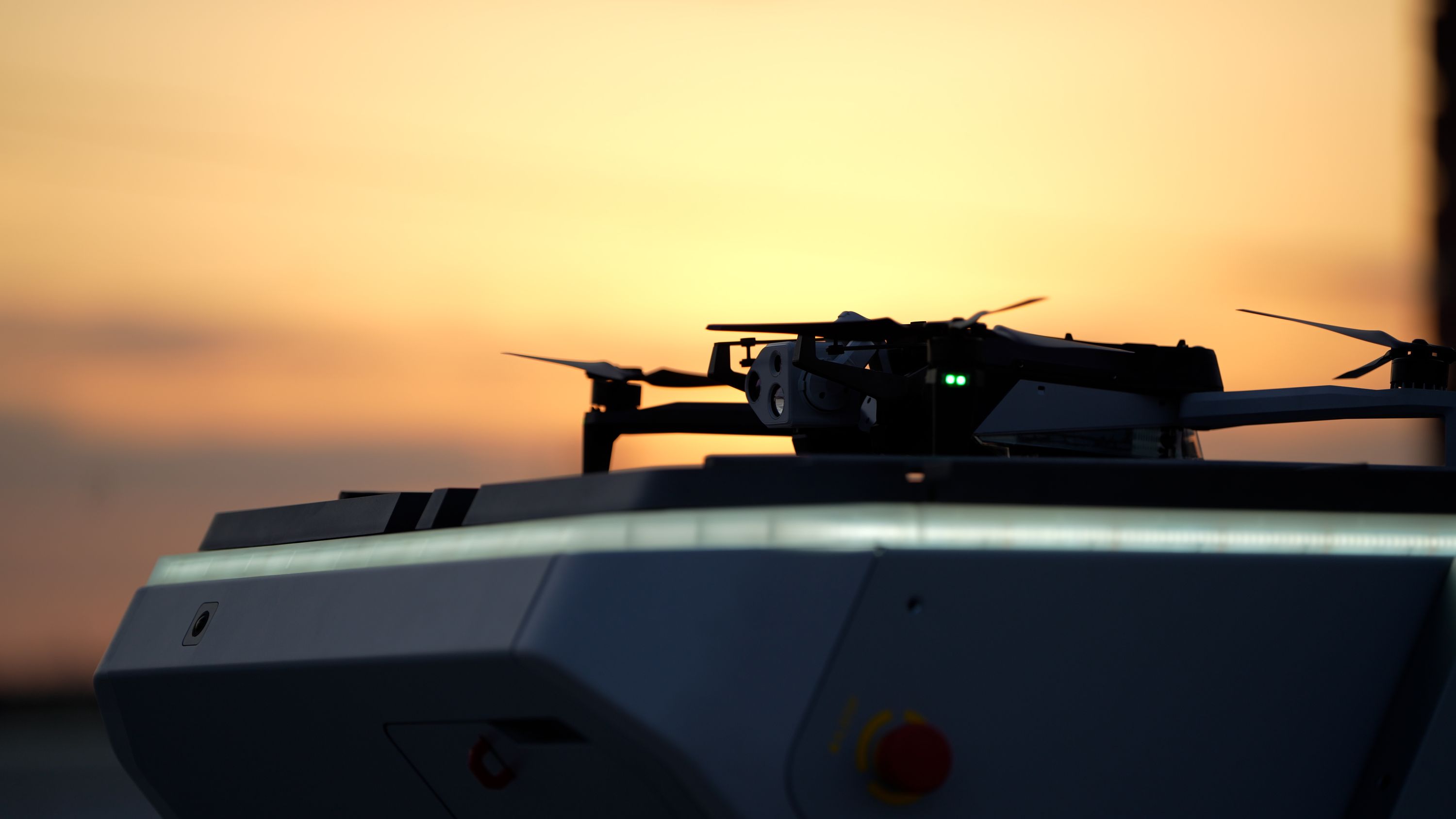Substation Monitoring with Skydio Dock: How recent Remote Ops Updates are Bringing More Value to Utilities
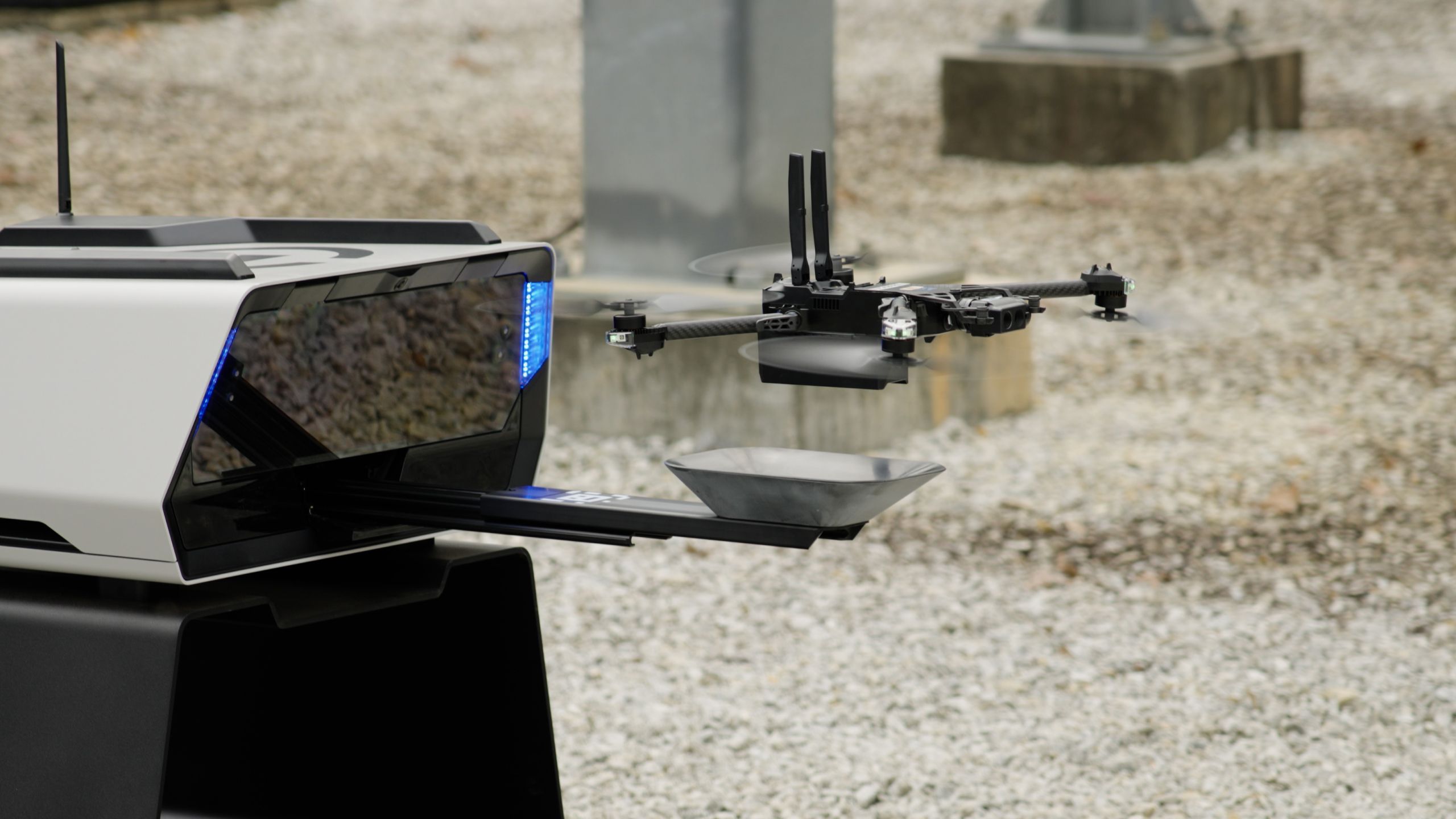
As Early Access customers of Skydio Dock continue to work closely with us and provide their feedback, we’re continually developing more capabilities based on their real-world applications to deliver more ROI.
With recent software updates, Skydio Remote Ops has become an even more valuable tool for these customers, and we're excited to share the significant enhancements we've made since the launch of Skydio Dock and Remote Ops.
Utility customers in particular are obtaining even more value from Dock at their substations by using it for recurring inspection of gauges and switches, post-incident response, and security patrol.

Substations are a complex and highly consequential environment. Many utilities organizations only trust Skydio drones to fly in this complex environment due to their advanced obstacle avoidance and ability to fly in energized environments by not relying on a magnetometer. This is how Skydio Autonomy, in combination with Remote Ops, enables automated workflows for inspecting substations that haven’t been possible before.
Recurring inspection
Maintaining substations requires both planned and unplanned inspections. Regular inspections are critical to detect potential failures early, as downtime can result in lost revenue and regulatory scrutiny. However, inspections can be time-consuming and costly, and the energized environment of substations poses inherent safety risks.
With substation operations, routine and event-based inspections can be done with Dock. Routine gauge inspections like oil level readings, counter readings, and other manual visual inspection tasks can be performed by a Dock-based drone at a higher frequency, providing near real-time situational awareness without having to roll a truck.
With event-based inspections, Skydio can inspect automated switches for nominal switch engagement by conducting a quick thermal scan of the switch under load.
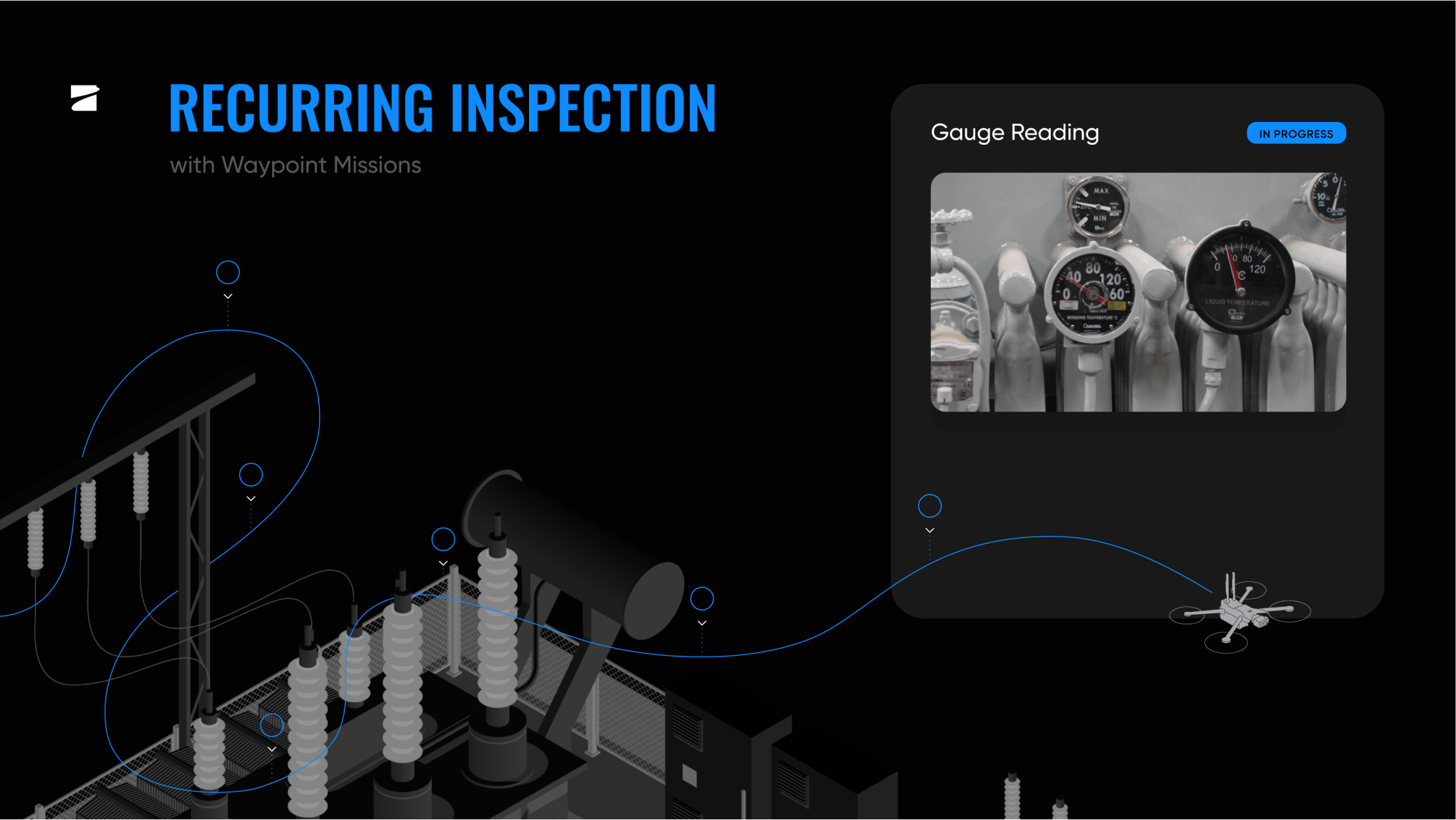
We recently saw the impact of a Dock deployment at the substation of a customer in the Midwest that generates power across more than 10 states, catching a faulty switch component early due to an elevated thermal profile using the Skydio X2’s thermal camera.
Typically, switches are only inspected with a thermal sensor annually. Detecting this hot spot early enabled the customer to switch the substation out, ground it, and replace the parts, getting it back to a healthy state within a day.
This is a prime example of condition-based maintenance, as opposed to time-based maintenance which could have resulted in a component failure, requiring a complete replacement of the whole switch and more downtime.
Skydio Dock enables proactive operations rather than reactive repairs, and in this case saved the customer potentially hundreds of thousands of dollars plus eliminated significant downtime for their customers.
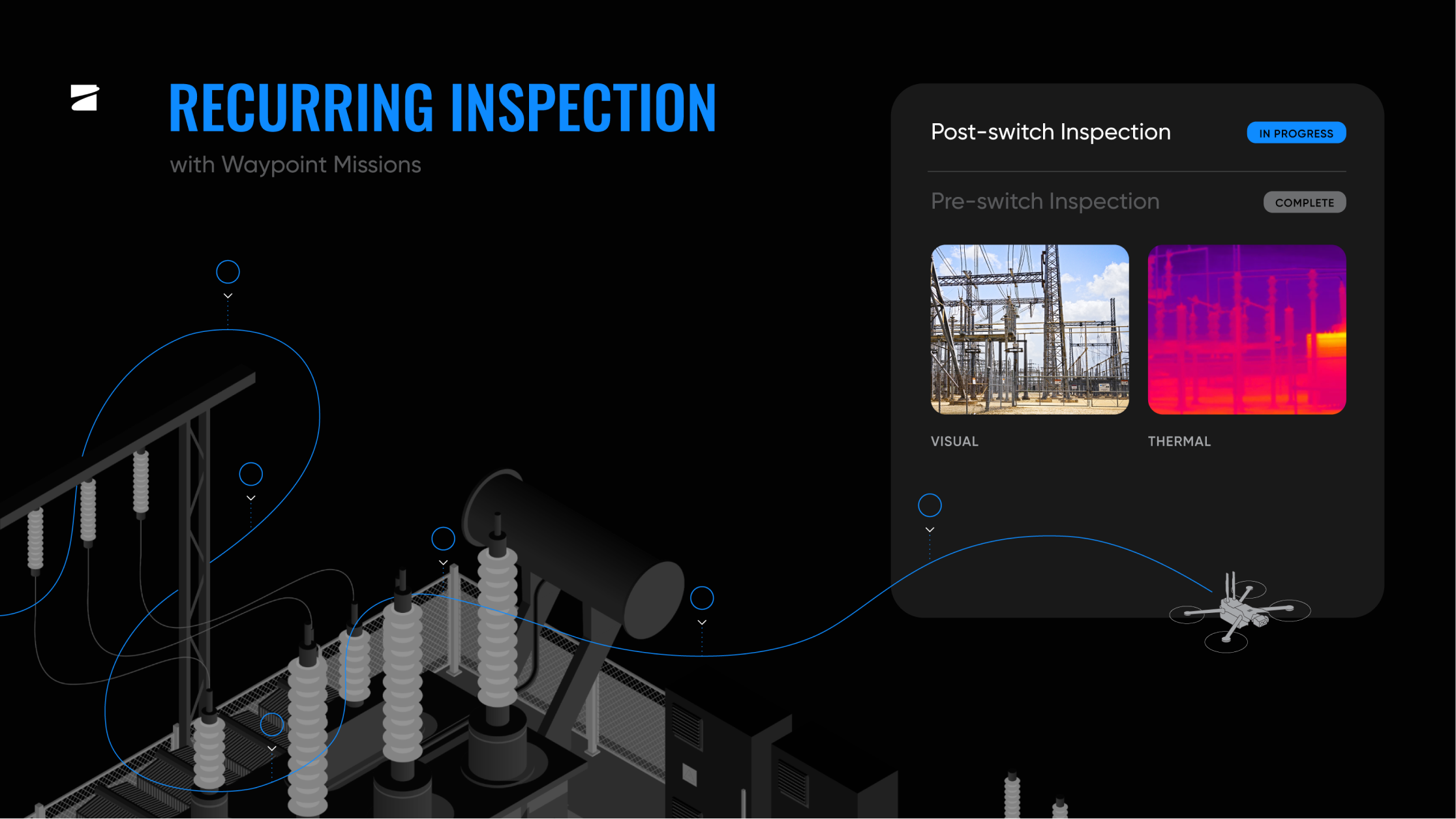
Seamless mission planning and precision
Using just the trackpad and keyboard on their laptop, the customer created the Autonomous Mission that was used to make this discovery in a few minutes – about the time it would take to fly a drone around the site.
Skydio Remote Ops allows you to plan and edit a mission from an overhead view of the site, or by flying the drone in Teleop mode, placing waypoint actions along the way. Once created, a mission can be easily scheduled and repeated as often as needed.
With the continual improvements made to Skydio Visual Positioning System (VPS), missions are now even more precise with GPS integration, especially for long-range, outdoor missions in complex environments such as substations.
VPS maintains the drone’s accuracy as it performs more precise and repeatable inspection missions, getting closer to equipment than any other drone safely can. That means you can get the same precise, close-up gauge reading – from the same angle, day after day – and the images are waiting for you and your team when you log into Skydio Cloud.
Post-incident response
Another key application where Skydio Dock is saving customers time and money is event response, such as an outage caused by wildlife, extreme weather, or any other unknown reason.
For example, when a natural disaster impacts a substation, traditionally a crew with a truck must travel there, climb ladders, physically inspect the system, and take notes – all to just drive back to get the tools and team required to actually fix the problem.
Depending on where the substation and crew are located, this could take several hours just to reach it, especially if the event is causing traffic, or worse, dangerous travel conditions for the crew.
With Skydio Dock, the drone is already on site, ready to deploy at a moment’s notice. Once launched, it can fly over obstacles, such as downed trees or flooded areas, and gather information on the status of the system to allow for more accurate deployment of resources to rapidly restore the system.
The Docked drone could also be used to provide damage assessment of the substation, distribution, and transmission assets within range of the Dock installation.
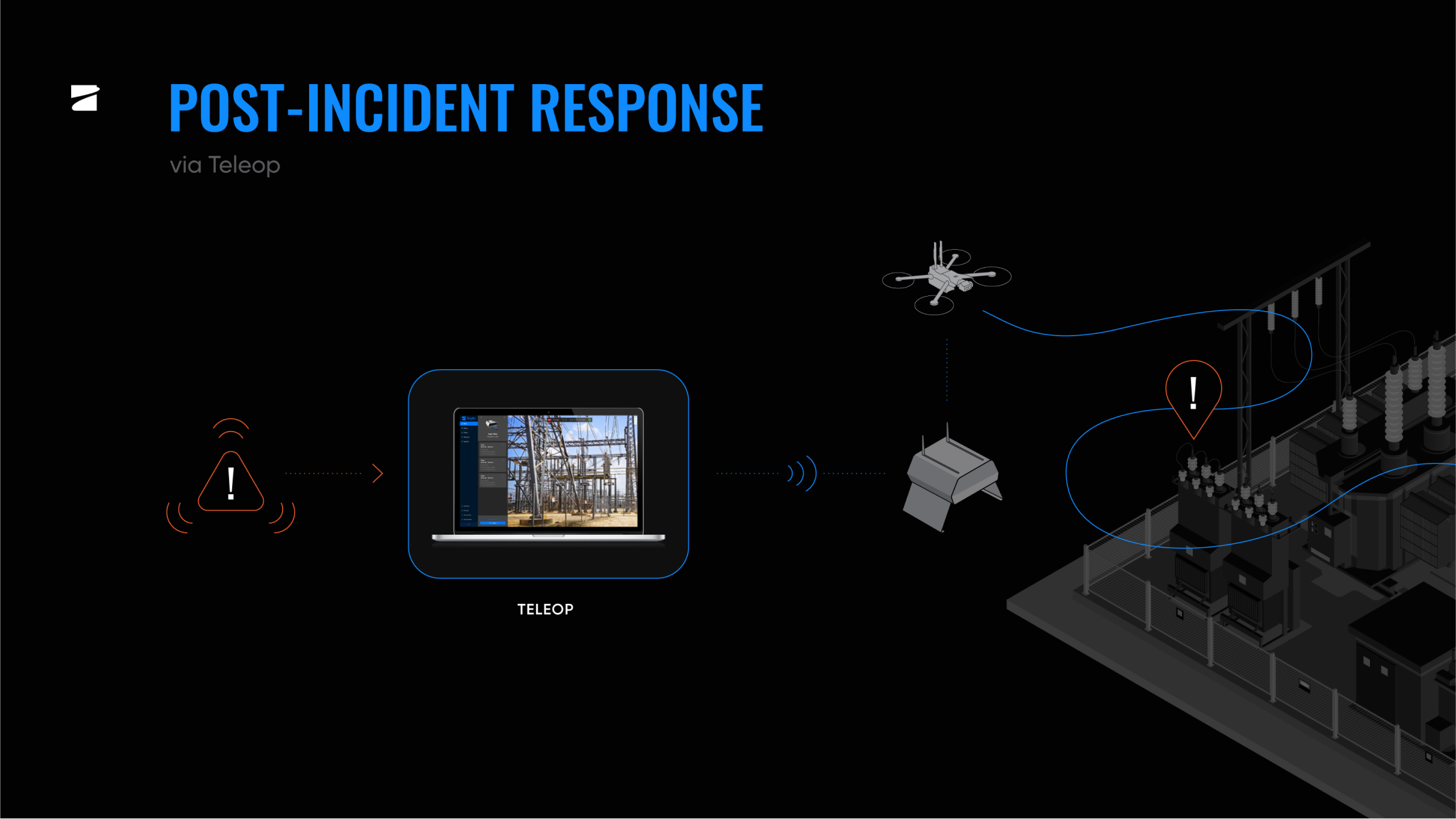
From the safety and comfort of an office, an inspector or technician can log in to Skydio Remote Ops to look through the Dock’s built-in camera and perform a visual safety check, viewing the conditions around the Dock and the state of the drone from the Dock’s built-in camera. Then, they can deploy the Docked drone and operate it easily and confidently in Teleop, capturing every possible point of interest and vantage point from the drone.
Skydio Streaming enables the drone’s video feed to be live streamed and shared to other teammates, wherever they are, to quickly disseminate information, and facilitate better communication and decision making. Furthermore, once the inspection is complete, the drone could be used to gain insights on the safest path of ingress to conduct further investigation or repairs.
Customers can fly with confidence without being or needing a highly skilled or trained pilot to control Remote Ops. With features such as ‘double click to fly’, anyone can deftly navigate an area just by looking through the drone’s camera on their computer screen and clicking on where they want it to fly. With ‘stop at structure’, the drone will slow down when approaching a structure, maintain collision avoidance, and allow for precise and predictable movement as you’re inspecting.
Security patrol
With the recent and more frequent attacks on the nation’s energy grid, the need to provide innovative solutions to counter the threat has become evident. Skydio drones provide an added layer of physical security to the nation’s power system.
A Dock-based drone can be programmed to fly a security patrol of a utility facility, such as a substation. Various flight paths and times can be scheduled in Remote Ops to randomize flight patterns, preventing a bad actor from developing pattern-based intelligence on the application of the drone for security purposes.
This scheduled and random application of the drone for security would also provide a level of deterrence by demonstrating an increased security posture at these locations.

Skydio’s advanced subject detection can be used to identify people who are in an area they are not supposed to be. An example would be distinguishing between a human near the perimeter of the station or an animal. This detection allows for accurate notifications to be sent to relevant personnel in the physical security departments of system owners.
In addition to the scheduled and random patrols, technologies currently in use at the facility can initiate event-based patrols. Customers can set up API integrations to allow sensors deployed at the utility facilities to trigger the launch of the Docked drone to provide real-time surveillance of the asset in the alarmed state. It's not feasible to staff every substation in the grid with human security guards, but you can still get eyes on the scene for a fraction of that cost with drones.
Regulatory requirements
For these use cases to be truly valuable, they need to be performed remotely, beyond the visual line of sight (BVLOS) of the drone. Today, that requires a special waiver from the FAA.
The FAA waiver application and process is not straightforward, but with the help and expertise of Skydio’s Regulatory Team, we simplify the process, freeing up your utility staff to tackle the multitude of problems already on your plates.
We recently helped customers Dominion Energy and New York Power Authority obtain waivers that enable fully remote beyond visual line of sight operations using Skydio Dock and Remote Ops with no flight crew on site.
One of those waivers covers dozens of locations across multiple states. We can help take every aspect of your operations from the beginning stages to realizing the full value and potential of Dock and Remote Ops. We’re excited to continually deliver more value to our Early Access customers while working with new customers and improving from their feedback.
Ready to get started with Skydio Dock at your substations?
Click here to join our Early Access Program. Our team will help you every step of the way.
